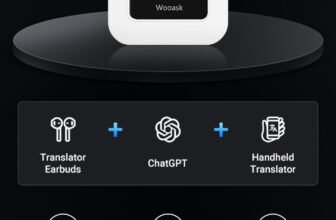What are the Benefits of Smart Contact Lenses

Eyes to the Future: The Science of Smart Contact Lenses
It began as a whisper in the world of science fiction, a contact lens that could project images, monitor health, and even connect to the internet. A decade ago, this idea was fodder for cyberpunk novels and futuristic thrillers. But today, as we stand on the brink of integrating microelectronics with human biology, smart contact lenses are stepping out of fiction and into our eyes.
Welcome to a world where your vision goes beyond sight. Let’s dive deep into the compelling story of smart contact lenses, what they are, how they work, their benefits, and where the future might take us.
Do Smart Contact Lenses Exist?
The short answer is: yes, but not quite the way you might imagine.
Several companies and research labs are actively developing smart contact lenses, and prototypes do exist. Tech giants like Google (via Verily Life Sciences), Mojo Vision, Samsung, and Sony, along with startups and university labs, are all in the race to bring this innovation to life.
But here’s the catch: most smart lenses are still in development, testing, or regulatory phases. The ones that do exist are typically designed for medical or research purposes, such as monitoring glucose levels in diabetic patients or assisting the visually impaired. The consumer-ready version, one that displays augmented reality (AR) overlays or connects to your smartphone, is still a work in progress.
However, the progress is real, and the technology is evolving rapidly.
How Do Smart Contact Lenses Work?
To understand how smart contact lenses work, imagine shrinking an entire electronic system, sensors, chips, antennas, batteries, and even display technology, down to the size of a fingernail. Then, imagine embedding all of that in a soft, transparent, biocompatible material that fits comfortably over your eye.
That’s the challenge.
Here’s a breakdown of how they work:
1. Sensors
Smart lenses can include biosensors to monitor metrics such as:
-
Glucose levels (by analyzing tears)
-
Intraocular pressure (for glaucoma patients)
-
Body temperature
-
Electrolyte balance
These sensors collect real-time data and can transmit it wirelessly to connected devices like smartphones or medical platforms.
2. Displays
Some advanced concepts like Mojo Vision’s smart contact lenses include a microLED display embedded into the lens. This display is smaller than a grain of sand and sits in front of the pupil. It can show text, navigation prompts, health alerts, and more, right in your field of vision.
3. Power Supply
Tiny batteries or energy harvesting systems power the lens. Some designs explore wireless charging, while others investigate using eye movements or solar energy.
4. Communication Modules
Smart lenses are equipped with wireless chips (like Bluetooth or NFC) to send data to external devices. These communications must be ultra-low-power to preserve battery life.
5. Microelectronics
All of this hardware needs to be ultra-miniaturized and embedded in soft, breathable, and comfortable lens material.
The engineering involved is nothing short of a miracle, merging nanotechnology, bioengineering, optics, and materials science into a single, seamless device.
The Benefits of Smart Contact Lenses
So why go through all this effort? What makes smart lenses worth developing?
1. Real-time Health Monitoring
Smart contact lenses can revolutionize healthcare by enabling non-invasive, real-time health tracking. For example:
-
Diabetics can track glucose levels without needles.
-
Glaucoma patients can monitor intraocular pressure to prevent vision loss.
-
Doctors can get continuous, accurate data for better diagnosis and treatment.
2. Enhanced Vision
Imagine zooming in on distant objects, improving night vision, or automatically adjusting focus depending on the light or your activity, all done by your lenses. That’s the promise of adaptive optics in smart lenses.
3. Augmented Reality (AR) Integration
Instead of wearing bulky AR glasses, smart lenses could:
-
Display directions while walking or driving.
-
Show live translations or subtitles in conversations.
-
Provide prompts and data to athletes, soldiers, or industrial workers in real time.
4. Accessibility
Smart lenses could aid those with visual impairments by recognizing faces, reading text aloud, or offering object detection through audio cues.
5. Medical Alerts
Imagine your eye notifying you of a stroke risk, heart anomaly, or dehydration before symptoms arise. Smart lenses could be life-saving.
Advantages and Disadvantages
As with any technology, smart contact lenses come with a mix of opportunities and challenges.
✅ Advantages
-
Unobtrusive and Invisible: Unlike glasses or watches, smart lenses are discreet.
-
Always-On Health Monitoring: They can collect continuous data without user intervention.
-
Multifunctional: Lenses can integrate multiple features in one wearable.
-
Improved Quality of Life: Especially for those with chronic health issues or visual impairments.
-
Hands-Free AR Access: A futuristic and seamless way to interact with data.
❌ Disadvantages
-
Power and Battery Limitations: Supplying power safely and efficiently in such a small device is difficult.
-
Comfort and Safety: The materials must be breathable, soft, and biocompatible to avoid irritation or infections.
-
Data Privacy and Security: Medical and personal data from your eyes could be highly sensitive.
-
Regulatory Challenges: Approval from agencies like the FDA can be lengthy and rigorous.
-
Cost: Early smart lenses may be expensive, limiting access to elite consumers or institutions.
-
Technical Reliability: Blinking, tear film, and eye movements all pose challenges to accurate sensing and display.
Despite the hurdles, innovation continues at a blistering pace.
The Future of Smart Contact Lenses
The smart contact lens is more than just a gadget; it represents a paradigm shift in how we interact with the world, our bodies, and each other.
Here’s a look at what the next 5–15 years might hold:
🔮 1. Fully Integrated AR Experiences
Expect lenses that overlay contextual data in real time, directions, names, schedules, weather, and even social media info, right in your visual space. You won’t need a phone or smartwatch. Just look, and the data appears.
🔬 2. Continuous Health Diagnostics
Smart lenses will become personalized health companions, monitoring blood pressure, stress, hydration, and even tracking biomarkers for early disease detection, such as cancer or neurological disorders.
🧠 3. Neuro-Interface Integration
Long-term, there may be synergy between smart lenses and brain-computer interfaces (BCIs), enabling seamless control of digital systems by thought, blending vision, intention, and machine.
🌐 4. Always-Connected Lifestyle
Think of your smart lens as a permanent portal to the internet. Notifications, translation, immersive experiences, all delivered directly to your eye.
🦾 5. Military and Industrial Applications
Smart lenses can assist soldiers with tactical overlays, engineers with equipment diagnostics, or pilots with real-time HUD data, all while keeping their hands and heads free.
🧑⚕️ 6. Personalized Medicine
With long-term usage, lenses will collect data specific to your biology, allowing doctors to tailor treatments more precisely than ever before.
Chapter Six: Ethical and Social Considerations
With great power comes great responsibility, and smart contact lenses bring profound ethical and societal implications.
-
Surveillance & Consent: Could smart lenses record video or data from others without their consent?
-
Digital Divide: Will only the wealthy have access to these enhancements?
-
Dependency on Technology: Could constant access to AR overload our senses or reduce real-world engagement?
-
Health Risks: What are the long-term impacts of electronic devices in such close contact with the body?
These questions must be addressed through transparent dialogue between developers, ethicists, regulators, and the public.
A Glimpse Through the Lens
We are entering a future where the boundary between human and machine becomes thinner with every innovation. Smart contact lenses won’t just help us see the world better, they’ll help us understand it better.
From personalized healthcare to augmented realities and beyond, smart lenses will redefine our relationship with our bodies, our environments, and our technology.
The journey from lab to lens is complex and fraught with challenges, but the promise it holds is transformative.
Just imagine: one blink, and the world changes. Not because you changed your perspective, but because your lens did.
So, do smart contact lenses exist?
Yes, they do. And the future they bring is already in sight. image/electropages





